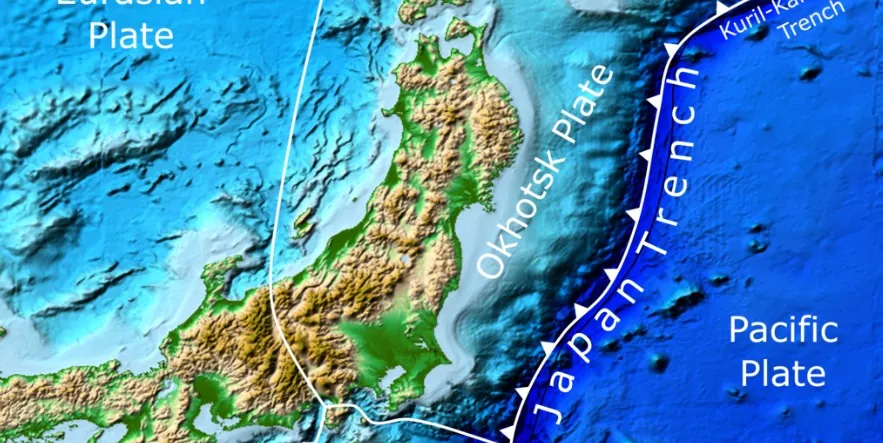Advanced modeling uncovers seamounts as the source of Japan’s tsunami earthquakes

A recent study challenges the prevailing hypothesis that subducted seamounts are weakly coupled and slide aseismically, suggesting that they act as strong asperities causing significant earthquakes instead. Through modeling and analysis, researchers have debunked the weak asperity model, providing a new explanation for the source of historical tsunami earthquakes along the southern Japan Trench, including the 1677 M8.3–8.6 Enpo Boso-oki event.
Key findings:
- The weak asperity hypothesis, based on the behavior of a seamount in the southern Japan Trench, is refuted.
- Strong asperities are necessary to explain the occurrence of large earthquakes and the long recurrence times observed.
The research, published recently in JGR Solid Earth has critically examined the widely accepted theory that subducted seamounts under the ocean’s surface are weakly coupled, proposing a strong asperity model that significantly alters our understanding of earthquake mechanisms.
Through a comprehensive examination of the case study in the southern Japan Trench, the authors provide compelling evidence and modeling results that refute the accepted hypothesis and present a new understanding of the seismic mechanisms associated with subducted seamounts.
According to the authors, their research is based on an abundance of new data, meticulous analysis, and advanced modeling techniques. It demonstrates that only steady-state stable sliding occurs in a weak asperity model whereas seamount acts as a stationary buttress, leading to the occurrence of ‘hang-up earthquakes’ in the stable sliding region.
This research challenges a decade-long scientific consensus and enhances our understanding of the seismic risk associated with subducted seamounts. Recognizing the strong coupling effect of seamounts provides a more accurate framework for predicting earthquake and tsunami patterns.
By debunking the weak asperity model and advocating for a strong asperity perspective, the study offers new insights into earthquake dynamics, emphasizing the critical role of subducted seamounts in initiating significant seismic events.
This advancement in seismic research could lead to improved earthquake prediction and mitigation strategies.
References:
1 Do Subducted Seamounts Act as Weak Asperities? – Sungho Lee, Eunseo Choi, Christopher H. Scholz – AGU/JGR Solid Earth – November 20, 2023 – https://doi.org/10.1029/2023JB027551
Featured image credit: Mike Norton

Commenting rules and guidelines
We value the thoughts and opinions of our readers and welcome healthy discussions on our website. In order to maintain a respectful and positive community, we ask that all commenters follow these rules.